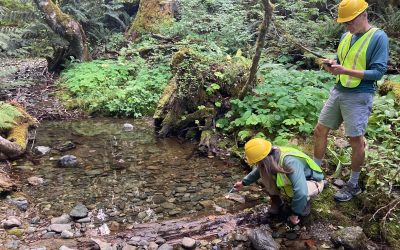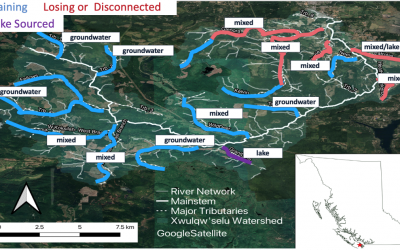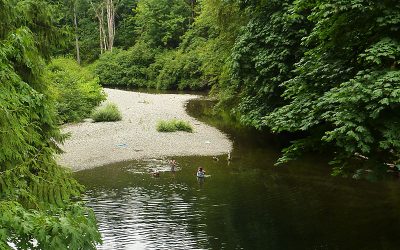OUR OUTCOMES
what we have learned so far…
We’re just starting our project but we already have some useful outcomes…
Preliminary Learnings from the Community Monitoring of Groundwater - Surface Water Interactions in the Xwulqw'selu Watershed for 2021/2022 Field Seasons
Key Summary Points:
- Volunteer monitors are producing large amounts of quality data consistent with data logger and expert data
- Discharge is sustained during low flows by the higher elevation, fractured bedrock found in the upper watershed such that streamflow from the upper watershed is equivalent to gauged flow Water Survey of Canada (WSC) in the lower watershed through August and into September
- The 12 tributaries measured above the WSC gauge in mid-August 2022 accounts for 50- 60% of mainstem streamflow
- Future work will focus on short- and long-term applications of the monitoring program
- We are requesting participation in monitoring program evaluation.
Stories and posts about our outcomes
Gaining and Losing Streams in the Xwulqw’selu watershed – Streamflow Snapshot 7
How does streamflow change from place to place...
Trends to Watch – Streamflow Snapshot 6
It’s a wrap! Community Stream Team monitors and...
Why is water usually cool at Bright Angel Park? Streamflow Snapshot 5
What are your favourite places to take a cool,...
If you like pictures…
here are highlights from our second summer in 2022
(check out this blog post for a deeper dive)
or here are highlights from our first summer in 2021…
If you like numbers…
We’re scientists so we get that some poeple love numbers even though we also know they don’t tell the whole story!
Check out Koksilah Stream Tracker for the actual stream observations that are openly shared.


